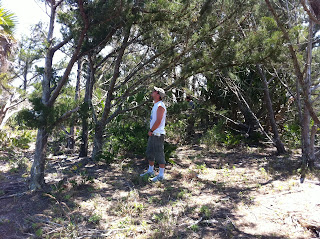One of the best ways to make work meaningful and authentic to high school students is to have them share their work with an audience. This is a generation that, for better or for worse, posts their every waking move on line. If its important to them, they post it on Facebook or put the video up on YouTube. I began to notice this when we were working on an exciting lesson in class (dissecting sharks, simulating meteor impacts on the moon, racing cockroaches, etc.). Students would ask me if they could take video of the lesson to show their friends. To the typical high school student if it is exciting, it is worth sharing. For them, sharing often makes an experience feel important. By tapping into this, teachers have an opportunity to increase student engagement, and now that anyone can set up a blog in a matter of minutses, it is easier than ever for teachers and students to share student work with the wider world. When I told my students that they would be sharing their projects (podcasts) online, I was amazed to see just how much more important the assignment became to them.
Their assignment was to research the global extinction crisis currently facing amphibians. With over 1,900 species of amphibians currently facing the threat of extinction, we run the very real risk of loosing 1/3 of all amphibian species in our lifetimes. These alarming statistics helped to grab their attention, but what really inspired them to make a creation worth sharing was simply the fact that I planned to share it with a wide audience.
Recently I found myself with the TED-Ed recording unit that I used to record the narration for this animated video http://ed.ted.com/lessons/sex-determination-more-complicated-than-you-thought. I included my students in the process when I was making the video and I shared the rough draft of the animation with my students before it was released on ed.ted.com. My students were fascinated with the process of me creating and sharing my own work with the world. Since I still had the recording equipment that TED had sent me, I decided my students should use it to record their own creations. This set the stage for them as they began creating their own podcasts. I think they really got a kick out of using the portable sound recording booth (a well designed hood of sound dampening foam).
I asked them to write and record 30-90 second micro-podcasts that would each highlight the plight of one individual amphibian species. While it might not be a very big step towards world wide amphibian conservation, I hope that it helped my students see that they have the power to create and that it is now easier than ever to share your creations with the world.
Here is what they came up with: http://endangeredamphibians.blogspot.com/ It is a blog telling the world about the endangered amphibians that they learned about. They have been thrilled to see it shared online. For them, and for many high school students, the important things are worth sharing.
Their assignment was to research the global extinction crisis currently facing amphibians. With over 1,900 species of amphibians currently facing the threat of extinction, we run the very real risk of loosing 1/3 of all amphibian species in our lifetimes. These alarming statistics helped to grab their attention, but what really inspired them to make a creation worth sharing was simply the fact that I planned to share it with a wide audience.
Recently I found myself with the TED-Ed recording unit that I used to record the narration for this animated video http://ed.ted.com/lessons/sex-determination-more-complicated-than-you-thought. I included my students in the process when I was making the video and I shared the rough draft of the animation with my students before it was released on ed.ted.com. My students were fascinated with the process of me creating and sharing my own work with the world. Since I still had the recording equipment that TED had sent me, I decided my students should use it to record their own creations. This set the stage for them as they began creating their own podcasts. I think they really got a kick out of using the portable sound recording booth (a well designed hood of sound dampening foam).
I asked them to write and record 30-90 second micro-podcasts that would each highlight the plight of one individual amphibian species. While it might not be a very big step towards world wide amphibian conservation, I hope that it helped my students see that they have the power to create and that it is now easier than ever to share your creations with the world.
Here is what they came up with: http://endangeredamphibians.blogspot.com/ It is a blog telling the world about the endangered amphibians that they learned about. They have been thrilled to see it shared online. For them, and for many high school students, the important things are worth sharing.




































